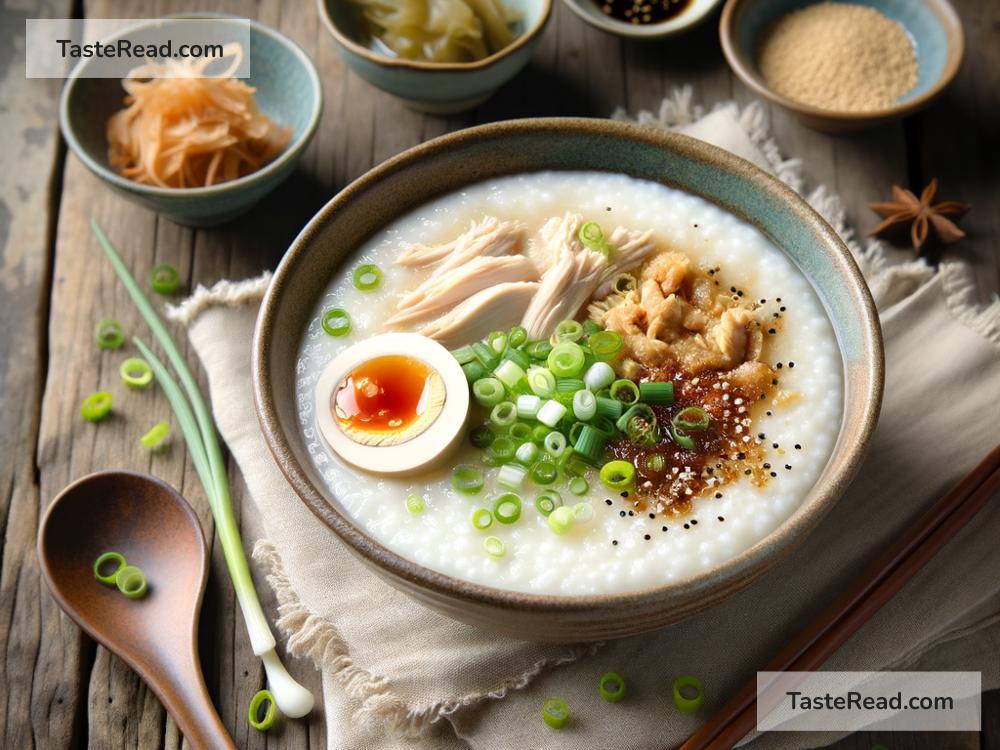Exploring the Graceful Simplicity of Cantonese Congee Variations
When it comes to comfort food, few things rival the soothing warmth of congee. Known as “jook” in Cantonese, congee is a type of rice porridge that holds a special place in Chinese cuisine. What makes Cantonese congee unique is its graceful simplicity. With just a few humble ingredients and a patient cooking process, this dish transforms into a bowl of creamy goodness that warms the soul.
Despite its simplicity, congee offers endless possibilities. In its purest form, it shines as a delicate dish with a mild, nourishing flavor. And with a few extra toppings or side ingredients, it becomes a versatile meal that caters to all kinds of tastes. Let’s dive into the elegance and variety of Cantonese congee and see why this dish has stood the test of time.
A Humble Base of Rice and Water
At its core, Cantonese congee begins with only two ingredients: rice and water (or broth for extra richness). The ratio of rice to liquid and the cooking method is what makes Cantonese congee special. While other cultures might prepare thicker porridge with a grainier texture, Cantonese congee is slow-cooked until the rice breaks down completely, creating a creamy, silky consistency.
Many families have their own traditions for cooking congee. Some might use leftover rice, while others start with freshly washed grains. The pot is simmered gently for hours, with the rice releasing its starch and blending into the liquid. The result is both filling and light—a wholesome canvas for creativity.
Plain Congee: A Taste of Simplicity
Plain congee often serves as a comforting base or a simple meal on its own. It is often eaten for breakfast or when someone is feeling under the weather. The mild taste makes it easy to digest and soothing to the stomach. Adding a touch of salt, some sesame oil, or a few drops of soy sauce is sometimes all that’s needed to enhance the flavor.
For those looking for an even simpler option, plain congee pairs perfectly with Chinese pickles, fermented tofu, or preserved duck eggs (also called century eggs). These condiments play with sweet, salty, and tangy notes, providing bursts of flavor with each spoonful.
Savory Varieties: Bringing Character to the Bowl
Cantonese congee truly shines in its savory adaptations. By adding meats, seafood, or vegetables, the dish turns into a satisfying, hearty meal. Here are some popular variations you’ll often find at home or in Cantonese restaurants:
-
Pork and Century Egg Congee
This classic pairing features soft pork slices and century eggs with a creamy, umami-rich flavor. Century eggs, preserved through a unique curing process, add bold flavors to the dish. The tender pork balances the eggs, while fresh spring onions or ginger slices sprinkle brightness to the meal. -
Chicken Congee
Chicken congee is a staple for many, especially during cold weather. Chicken is simmered until tender, releasing its flavors into the porridge. Some recipes include ginger, which not only adds warmth but also enhances digestion. The result is a comforting bowl that feels like a warm hug. -
Fish Congee
Fish congee is prized for its light and fresh taste. Thin slices of delicate white fish, such as cod or tilapia, are added to the congee, allowing the flavors to blend seamlessly. A touch of white pepper and a sprinkle of cilantro or sliced ginger adds an extra zing. -
Beef Congee
Thinly sliced beef, marinated with soy sauce and sesame oil, makes beef congee a rich and flavorful option. The beef cooks quickly when added to the hot porridge, becoming tender and juicy. This variation is a favorite for those craving something more substantial.
Topping It Off: Customizing Your Bowl
One of the joys of eating Cantonese congee is customizing it with different toppings. Fried dough sticks, called “youtiao” in Chinese, are a classic choice. These crispy fried breadsticks pair perfectly with congee, offering a buttery crunch that contrasts the soft texture of the porridge.
Other popular garnishes include chopped green onions, cilantro, or crushed peanuts. For an extra kick, many people enjoy adding soy sauce, chili oil, or a dash of white pepper. Some even drizzle sesame oil for nuttiness or sprinkle roasted garlic for a fragrant twist.
Beyond Breakfast: A Dish for Anytime
While congee is an excellent breakfast dish, many Cantonese families enjoy it throughout the day—whether as lunch, dinner, or even a midnight snack. Its versatility and soothing nature make it a meal that transcends time and mood.
Congee also has significance in traditional Chinese medicine, where it’s often recommended for its gentle properties, especially for individuals recovering from illness or seeking digestive health. It’s a dish that nourishes both body and soul.
The Beauty of Cantonese Congee
Cantonese congee showcases the beauty of simple ingredients cooked with care. From a plain bowl of rice porridge to elaborate versions packed with meat, seafood, or vegetables, congee offers something for everyone. Every spoonful reflects generations of tradition—a reminder of how food can connect us to our roots and provide comfort in the smallest moments.
So next time you’re craving something warm and soothing, try making a bowl of Cantonese congee. Its simplicity will impress you, and the possibilities will inspire you to get creative with toppings and flavors. Whether you’re sharing it with loved ones or enjoying it alone, congee is a dish that brings happiness with every bite.


